Though small, the Mojave Desert is an interesting and captivating part of the American landscape. It was named for the Indigenous group that called this land home, the Mojave people. It is home to many species of plants and animals, even though it does not get very much rainfall. What does it take to survive in the Mojave Desert?
How large is the Mojave Desert?
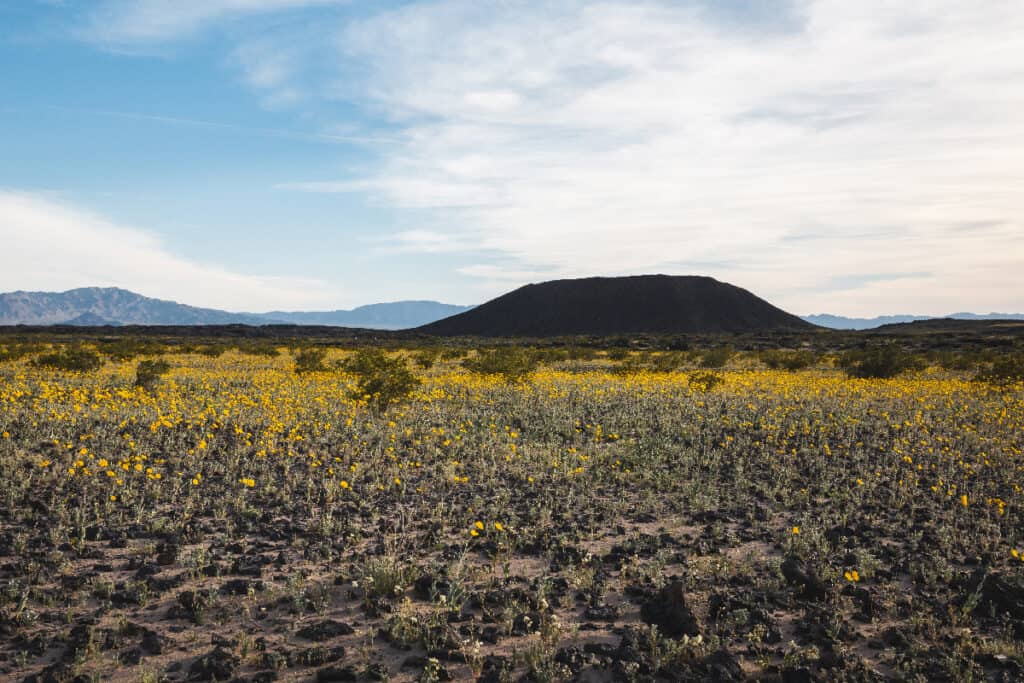
Amboy Crater, located in the eastern Mojave Desert of southern California, was designated a National Natural Landmark in 1973.
©iStock.com/Attila Adam
The Mojave Desert covers around 20 million acres. While this sounds like a vast landscape, and it certainly feels that way when you stand in the middle of it, it is actually one of the smaller deserts in the American Southwest. Others include the Sonoran Desert, Chihuahuan Desert, and the Great Basin Desert. By comparison to these massive areas, the Mojave Desert is much smaller.
But the Mojave is one of the better-known and more recognizable American deserts. This is in part because of the three national parks that are located in the Mojave Desert. These are Death Valley National Park, Joshua Tree National Park, and the Mojave National Preserve in California.
Where is the Mojave Desert located?
This desert is located in the American Southwest. While it is often associated with California and is certainly a major tourist attraction to those heading to California, it actually spans multiple states. The Mojave Desert covers parts of Nevada, Arizona, and Utah, as well as California.
The Mojave National Preserve is located in California and makes up a vast portion of the Mojave Desert. This is where you can hike up the Kelso Dunes, the largest sand dunes in the United States. They are over 600 feet tall and made of sand that blew from the Mojave River over many years. Now, the dunes support plants, animals, and insects.
Joshua Tree National Park is also in California. The park includes part of the Mojave Desert and the Colorado Desert. It is named for the native tree, the Joshua Tree. It is quite distinctive and has become associated with this area, which is the only place on earth where it grows.
Death Valley National Park is the driest and hottest area in the Mojave Desert. It’s not called Death Valley for no reason, after all. It is below sea level and the driest and hottest of all American National Parks. But that doesn’t mean that it is a barren wasteland. There are plenty of species that live and thrive in Death Valley National Park, and it is open for visitors to explore the unique ecosystem. There is even an annual Dark Sky Festival to encourage people to stargaze at one of the country’s best places to view stars.
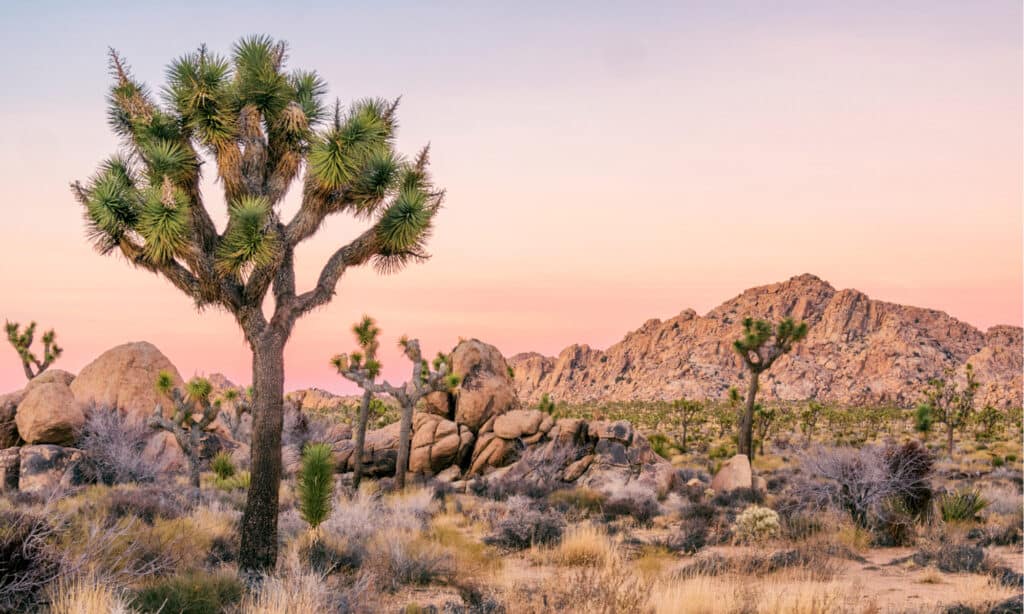
Joshua Tree National Park is home to around 52 species of wildlife.
©Dennis Silvas/Shutterstock.com
What is the average annual rainfall in the Mojave Desert?
The rainfall varies based on where you are in the Mojave Desert. In the lowest portions, at or below sea level, as little as 3.5 inches of rain falls annually. This is less than some major cities get during a single thunderstorm. Even at higher elevations, such as in the mountains, as much as 10 inches falls annually on average.
Rain and snow are not unusual in the mountain areas of the Mojave Desert. At higher elevations, precipitation is more common. The Sierra Nevada mountains form one edge of the Mojave. Other notable mountains include the Panamint Mountains, which are 11,000 feet above sea level.
Overall, the average rainfall in the Mojave Desert is between 2 and 6 inches each year.
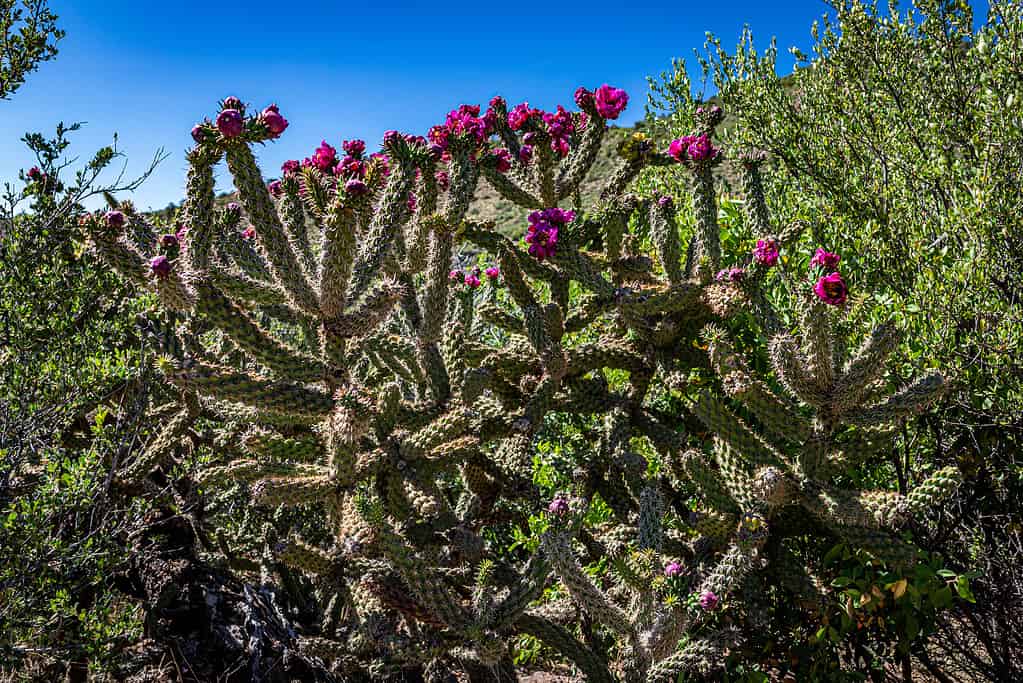
Cylindropuntia acanthocarpa, commonly referred to as staghorn, or buckhorn, cholla, is a cholla native to the Mojave, Sonoran, and Colorado Deserts of North America.
©iStock.com/Different_Brian
What are the hottest, coldest, and average temperatures in the Mojave desert?
Like the rain, temperatures in the Mojave Desert can vary dramatically between the hotter and drier places, such as Death Valley, and the higher points in the mountainous regions. The Mojave Desert also sees distinct differences in the seasons. While you may think a desert is hot year-round, it can get quite cold, especially at night.
High Temperatures during the Summer
The hottest temperature on record in the Mojave Desert occurred in Death Valley in August 2020. Thermometers showed a reading of 130 degrees Fahrenheit. Not only was this the hottest temperature in the Mojave, but it was also the hottest temperature on record ever!
The hottest months are typically June, July, and August. Temperatures at high elevation points, such as Granite Mountain at 4,200 feet above sea level, average 85, 90, and 89 degrees Fahrenheit during those months. Closer to sea level, temperatures get as high as 103, 109, and 107 degrees Fahrenheit during the height of the summer.
Low Temperatures during the Winter
Deserts can get chilly at night, even during the hot months of the summer. The Mojave Desert is no exception. Low temperatures during June, July, and August averaged 63, 67, and 66 degrees Fahrenheit. While this may not seem cold, when you compare it to over-100-degree temperatures during the day, it feels downright frigid. If you visit the Mojave Desert, make sure to pack layers so that you can be comfortable both day and night.
The lowest temperatures often fall during winter, especially in December, January, and February. Low temperatures at high elevation points average 34, 36, and 38 degrees Fahrenheit. Low elevation points are about the same, with average low temperatures around 34, 34, and 40 degrees Fahrenheit. There seems to be a less drastic difference between the regions within the Mojave Desert when it comes to cold temperatures, although the average highs during the winter months still tend to be higher closer to sea level.
How much rainfall does it get?
A desert is characterized by unusually low amounts of precipitation. While this is true, that doesn’t mean that the Mojave Desert doesn’t get any rainfall or snowfall at all. In fact, many mountains and areas at higher elevations receive plenty of rainfall. Snow is also common on the mountain peaks, especially during the winter. The average rainfall across the desert is between two and six inches each year.
If you are visiting the Mojave Desert and see a crop of wildflowers, chances are that area had rain recently. Because it does not happen all of the time, when rain does fall, the native plants spring to life. It is often easy to see the differences between wildflowers that bloom when it rains and cacti that live in the driest parts of the desert, such as Death Valley.
What animals live in the Mojave Desert?
Because it does not have a lot of rainfall in many areas, only the toughest of animals can survive in the Mojave Desert. Bighorn Sheep and Roadrunners are two animals that call this area home. They can thrive on the plants that grow in this arid region and do not need as much water as other tropical animals that wouldn’t make it in the Mojave. Bighorn Sheep have hooves that let them walk on rocky terrain with ease.
Desert owls are also a common sight. These include Burrowing Owls that take advantage of cooler nighttime temperatures to hunt small mammals. They also eat during the day and burrow underground in nests. Mountain Lions reign as one of the largest carnivores in the desert.
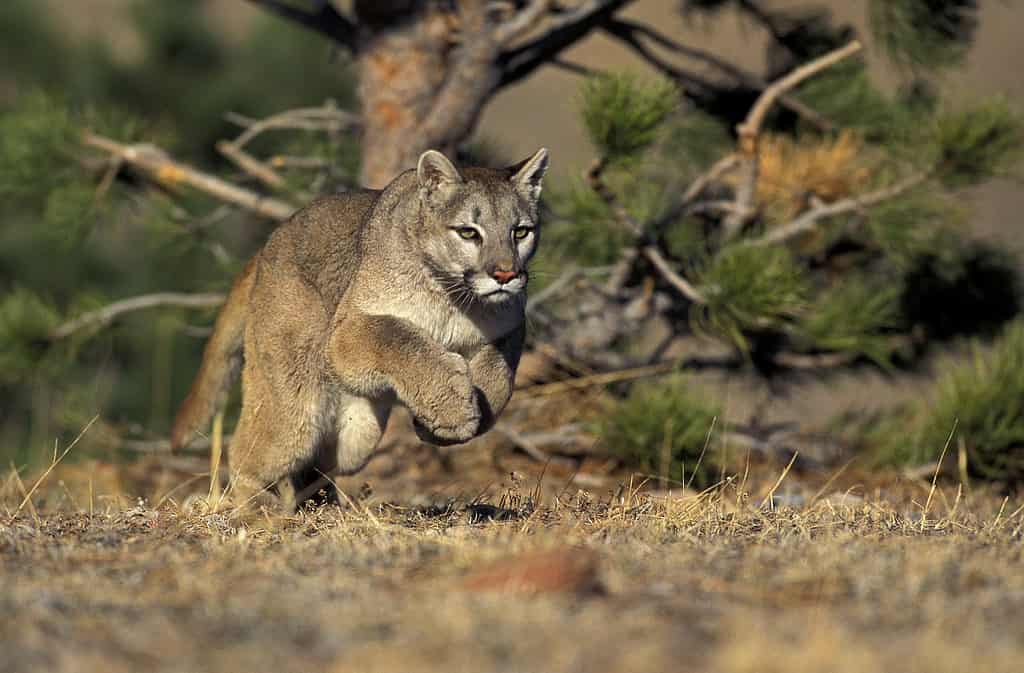
Mountain lions
can reach 50 mph in short bursts.
©iStock.com/slowmotiongli
What to do and see in the Mojave Desert
The Mojave Desert is home to many natural wonders, including the famed Death Valley, the hottest and driest national park in the United States. You can visit Death Valley, although be sure to follow all safety precautions. Dante’s Peak in Death Valley was one of the otherworldly locations that were used to film Star Wars.
Joshua Tree is another interesting national park that is home to thousands of Joshua trees, or Yucca trees. These look more like cacti than trees, with long spindly arms that point in all directions. You can find plenty of places to capture a memorable photo among their branches.
Lake Mead is a good place to relax. It was created as a result of the Hoover Dam. Lake Mead has access locations in Arizona and Nevada where you can try boating, fishing, or swimming. There are also great vistas in Red Rock Canyon, Antelope Valley, and Snow Canyon. Even though the Mojave Desert is one of the driest places in the United States, there is no shortage of natural beauty and wonder to enjoy.
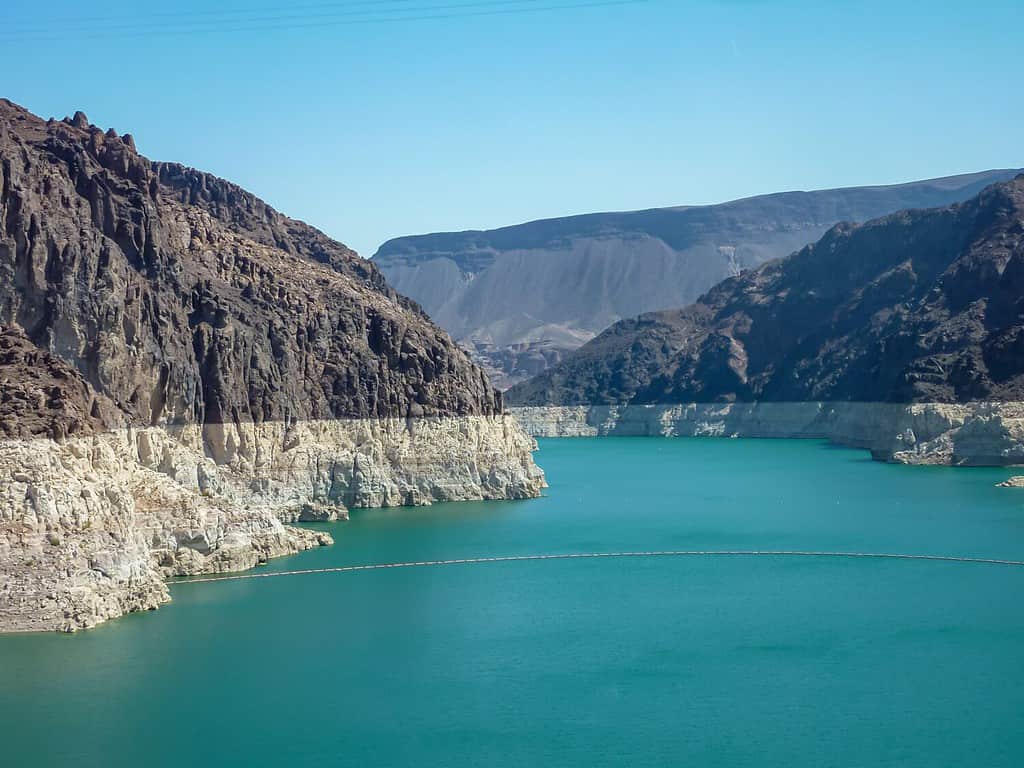
The Hoover Dam looking towards Lake Mead from the Mike O’Callaghan–Pat Tillman Memorial Bridge, Nevada Arizona state line, USA. Blue turquoise water surrounded by lush dry mountain ranges
©Christopher Moswitzer/Shutterstock.com
Thank you for reading! Have some feedback for us? Contact the AZ Animals editorial team.








